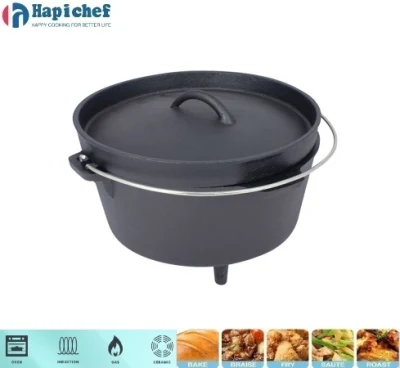How to Restore a Damaged Cast Iron Pan Effectively and Safely
The Beauty of Cooking with a Burnt Cast Iron Pan
Cast iron pans have been a staple in kitchens for centuries, prized for their durability and excellent heat retention. However, what happens when you accidentally burn your cast iron pan? While some might consider it a kitchen disaster, a burnt cast iron pan can offer unique opportunities for flavor development and cooking techniques that elevate your culinary experience.
First, let’s understand what makes a cast iron pan so special. The ability of cast iron to retain and distribute heat evenly makes it ideal for various cooking methods—from frying and braising to baking and even grilling. Over time, a well-seasoned cast iron pan develops a naturally non-stick surface, thanks to layers of polymerized oils that create a protective coating. This seasoning not only helps with food release but also adds flavor to your dishes.
When a cast iron pan gets burnt, it may seem like the seasoning is ruined and the pan is unusable. However, seasoned chefs often embrace this “flaw” as a character-building phase of the pan. A burnt cast iron pan can bring forth a depth of flavor that is hard to replicate with other cooking vessels. The slight char and smoky notes from the burnt residue can infuse dishes with a richly layered taste that adds complexity to everything from roasted vegetables to seared meats.
To revive—and even celebrate—a burnt cast iron pan, start by addressing the surface. While some burnt residue is desirable for flavor, a thick layer of carbon buildup can affect cooking performance. Use a mixture of coarse salt and water or a dedicated cast iron scrubber to remove excess char without stripping away the seasoning. Once cleaned, you can re-season your pan by applying a thin layer of vegetable oil and baking it upside down in the oven. This process re-establishes the protective layer, ensuring that your pan is ready for future cooking adventures.
burnt cast iron pan

One culinary technique that shines when using a burnt cast iron pan is sautéing. The remnants of burnt food can act as a flavorful base for sauces or gravies. A splash of wine or broth can deglaze the pan, lifting those intensely flavored bits off the bottom and integrating them into your dish. This method of using the pan’s history to your advantage is a hallmark of rustic cooking, rooted in the practice of maximizing every element in the kitchen.
Moreover, burnt cast iron pans are perfect for baking. The cast iron's heat retention properties allow for a golden crust on cornbread, focaccia, or even a deep-dish pizza. If you find your pan has some unwanted burnt spots, simply layer the dough or batter over these areas—they’ll often contribute a pleasantly toasted taste to your baked goods.
Another exciting avenue is experimenting with high-temperature cooking methods. A well-worn, slightly burnt cast iron pan can handle high heat like a champion. Try using it for searing steaks or stir-frying vegetables. The canvas of burnt remnants will add a hint of smokiness, elevating the dish far beyond the ordinary.
In conclusion, while a burnt cast iron pan may seem like a culinary mishap at first glance, it represents a unique opportunity to explore flavors and techniques that can enhance your cooking. The next time you find yourself staring at a charred skillet, remember that it may just hold the secret to igniting deeper flavors and richer dishes. Embrace the imperfections, and let the burnt notes of your cast iron pan inspire you in your culinary journey. Every mark and char tells a story; with a little creativity, the possibilities are endless.
-
Why Every Kitchen Needs a Casserole Cast Iron DishNewsJun.24,2025
-
Experience the Tradition and Quality of Cast Iron CookwareNewsJun.24,2025
-
Double Sided Cast Iron Grill PanNewsJun.24,2025
-
Cast Iron Dutch Ovens You’ll Actually UseNewsJun.24,2025
-
Buy Cast Iron Griddle for Everyday CookingNewsJun.24,2025
-
Barbecue Iron Grill Cooking PowerNewsJun.24,2025
-
Standard Product Lines from Cast Iron Cookware SuppliersNewsJun.11,2025
